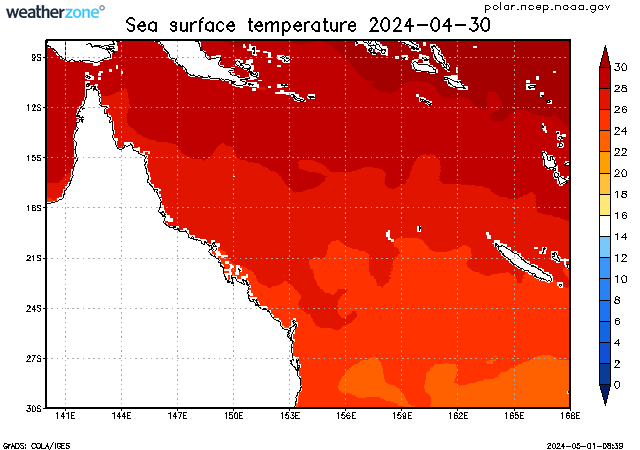- WEATHER
Australia
- National
- New South Wales
- Victoria
- Queensland
- Western Australia
- South Australia
- Tasmania
- ACT
- Northern Territory
Long Range Forecasts
- WARNINGS
- RADAR
- SATELLITE
- MAPS & CHARTS
- LONG RANGE
Long Range Forecasts
- CLIMATE
Climate Indicators
- NEWS
Queensland Sea Surface Temperature
The sea surface temperature (SST) varies much more slowly than atmospheric temperatures due to the heat capacity of water. As such, the SSTs lag the atmospheric temperatures on a seasonal timescale by about 3 months. The lowest SSTs are usually observed in early Spring and the highest SSTs are observed in early Autumn.
In tropical regions, SSTs greater than 26°C are considered suitable for formation of tropical cyclones.
The data displayed in this map is the weekly average, centred on the date shown.
Signs indicating Australia's cool season arrival
16:15 AEST Mere hours after our Total Lightning Network went quiet over the Australian continent, the Himawari satellite captured a clear, textbook snapshot of the arrival of Australia's cool season. A few distinguishing features should catch your eye: A band of cloud streaming over northern WA and towards the nation's interior A distinct clearing of cloud from most of the NT's Top End, and A band of cloud crossing to the south of WA Turns out, all three of these features point to one thing: winter is knocking at the door. Image: Himawari satellite imagery and mean sea level pressure (ECMWF) over Australia on the morning of Saturday, April 27th, 2024.

